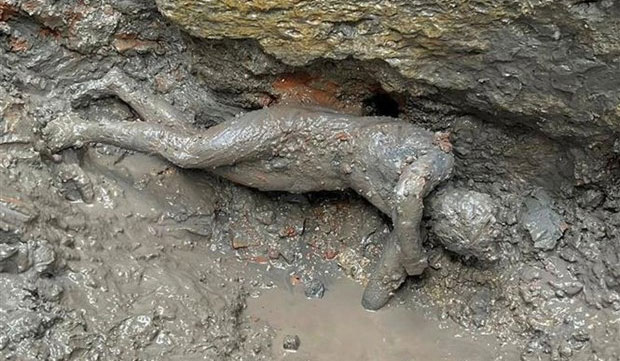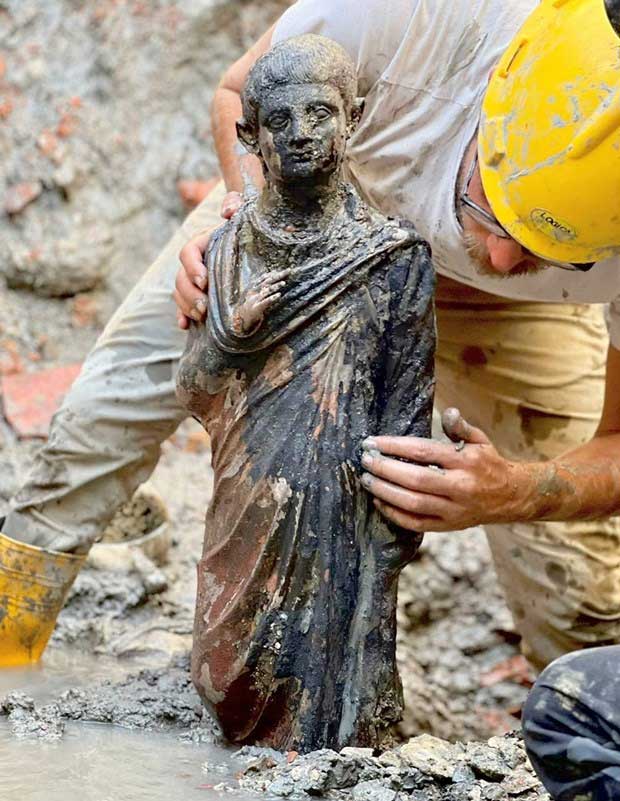The statues were uncovered two weeks ago while archaeologists were excavating an ancient hot spring bathing facility in what is now the village of San Casciano dei Bagni in Tuscany.
On November 8, the Italian Ministry of Culture announced that archaeologists had discovered 24 bronze statues dating back more than 2,000 years, well-preserved beneath the mud of an ancient hot spring facility.

The statues unearthed here date back to the 2nd century BC. (Photo released by the Italian Ministry of Culture on November 8, 2022: AFP/TTXVN).
The statues were revealed two weeks ago during the excavation of an ancient hot spring bathing facility in the village of San Casciano dei Bagni in Tuscany.
According to the Italian Ministry of Culture, this discovery could open new chapters in the archaeological history of the “boot-shaped country.” Among the most notable of these statues is likely the statue of the goddess Hygieneia, the Roman goddess of health. Additionally, there are statues of famous gods and emperors from the Roman Empire.
Commenting on the statue of the goddess Hygieneia, Massimo Osanna, the Director General of the Museums Agency under the Italian Ministry of Culture, stated: “This is the most important discovery since the finding of the two bronze statues known as the ‘Riace Warriors’ and certainly one of the most significant bronze statues created in the history of the ancient Mediterranean.”
According to Osanna, these artifacts will be displayed in a special museum located in a 500-year-old villa in San Casciano dei Bagni.
Expert Jacopo Tabolli, working at the University of Siena in Tuscany, described this discovery as “a truly unique treasure” that will “rewrite history as the collection of the greatest bronze statues of ancient Italy.”

One of the bronze statues discovered at the hot spring facility in Tuscany, Italy (photo released by the Italian Ministry of Culture on November 8, 2022). (Photo: AFP/TTXVN).

The recently unearthed statues date back to the 2nd century BC. (Photo: AFP/TTXVN).
The hot spring facilities in San Casciano dei Bagni were once favored by emperors and high-ranking officials during the Roman era. These facilities operated for about 800 years, starting from the 3rd century BC.
As a country rich in cultural heritage and history, Italy currently boasts 58 World Heritage Sites recognized by the United Nations Educational, Scientific and Cultural Organization (UNESCO).


















































